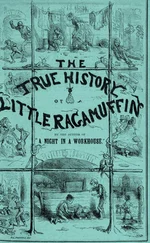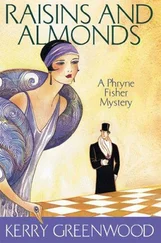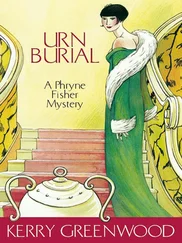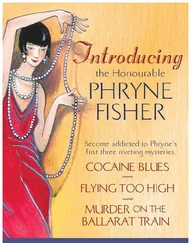Kerry Greenwood - Tamam Shud
Здесь есть возможность читать онлайн «Kerry Greenwood - Tamam Shud» весь текст электронной книги совершенно бесплатно (целиком полную версию без сокращений). В некоторых случаях можно слушать аудио, скачать через торрент в формате fb2 и присутствует краткое содержание. Город: Sydney, Год выпуска: 2012, ISBN: 2012, Издательство: NewSouth, Жанр: Детектив, Прочая документальная литература, на английском языке. Описание произведения, (предисловие) а так же отзывы посетителей доступны на портале библиотеки ЛибКат.
- Название:Tamam Shud
- Автор:
- Издательство:NewSouth
- Жанр:
- Год:2012
- Город:Sydney
- ISBN:978-1-742-23350-5
- Рейтинг книги:3 / 5. Голосов: 1
-
Избранное:Добавить в избранное
- Отзывы:
-
Ваша оценка:
- 60
- 1
- 2
- 3
- 4
- 5
Tamam Shud: краткое содержание, описание и аннотация
Предлагаем к чтению аннотацию, описание, краткое содержание или предисловие (зависит от того, что написал сам автор книги «Tamam Shud»). Если вы не нашли необходимую информацию о книге — напишите в комментариях, мы постараемся отыскать её.
Tamam Shud — читать онлайн бесплатно полную книгу (весь текст) целиком
Ниже представлен текст книги, разбитый по страницам. Система сохранения места последней прочитанной страницы, позволяет с удобством читать онлайн бесплатно книгу «Tamam Shud», без необходимости каждый раз заново искать на чём Вы остановились. Поставьте закладку, и сможете в любой момент перейти на страницу, на которой закончили чтение.
Интервал:
Закладка:
The second line has possible words including acetic and arctic, which obey the rule that the missing letters cannot be any of tamshud. Arctic looks promising, since our code letter i occurs at letter 3 and 6, which would then construe as C. For line 4, however, this gives a pattern AC?T?? which only gives us words like ACETYL and other even less likely cribs. This does not seem to be leading anywhere productive.
If part of the message is indeed gibberish, another possibility is that the message does not in fact begin until after the cross. This gives our message as (assuming the c and i are just scribbles as previously suggested) two lines of 4 and 12 letters:
aiaq
ttmtsamstgab
Our box code gives us:
MGSO
TTTMASSMAFMD
The use of TT here seems to rule out a box code using tamshud as our keyword with lines of 4 and 12 letters. If we expand using the extra c and i we get:
aiaqcittmtsamstgab:
In this system our crib is:
MGSOBKTTTMASSMAFMD
Again, we don’t seem to be getting anywhere. The problem with adding two extra letters is that the problem with the letter T is still there. Arbitrarily choosing only one of the two extra letters gives an uneven number of letters.
Using omakhy as our keyword, the crib is RGAQ (CI) TTKPRRPLQAB.
Using rubaiyt as our keyword, the crib is IAIP (EB) TTNYXRMSTGBA.
Using fitzgerald as our keyword, the crib is TRLP (CI) TTHGPDMSGTEH.
Again, no plausible solution emerges from this. The use of the TT is an endemic problem on its own, and if it is a box code at all then the keyword must be something entirely different.
If we reduce the sample this way, the problem with tamshud equals ETAOINS remains:
aiaq (c?)
(i?) ttmtsamstgab
becomes
TiTqc
iEEAEOTAOEgTb
The vowel combination in the last line is an insuperable obstacle.
Neither box codes nor ETAOINS letter substitution would appear to be a solution to our code. The code still seems unbreakable.
Forensic pathologist Shelley Robertson’s analysis of the autopsy
Can death due to ‘natural causes’ be excluded?
I find the pathologist’s eagerness to exclude natural causes as the cause of death somewhat disconcerting. From the snippets of the pathology report I have seen, there is significant pathology present, that is, englarged spleen (3 times the normal size). If it is really this big, it suggests that the deceased may have had an underlying haematological condition or some strange infectious disease. Then there is the bleeding into the stomach. The mucosa is described as ‘congested’ which is a very nonspecific finding and if it really was due to the irritant effects of some ingested toxin, one would expect there to be perhaps involvement of the oesophagus or some evidence of vomiting (not the half-digested remains of the pastie sitting there). Many cardiac conditions are currently recognised as causing sudden death by producing a rapidly fatal cardiac arrhythmia (for example, QT syndrome). These were probably not recognised in the 1940s. I agree that the circumstances surrounding this man’s death make natural causes unlikely but I haven’t seen anything in the pathology comments to exclude natural causes so vehemently.
Red herrings
I see a few things again in the ‘pathology snippets’, which I think only have the potential to give misleading information. These include the description by the pathologist of ‘pupil size’ which really can’t be ascertained properly after death. Then there is the ‘high set calf and pointy toe stuff’ described by the taxidermist/death mask maker (and his qualifications in this area would be???). There is also mention of the deceased having ‘an athlete’s heart’ and ‘inflammation of the bowels’. Athlete’s can have considerably enlarged hearts which may, in themselves, cause an increased susceptibility to cardiac arrhythmia. But is this what the pathologist really said? And it would need to be confirmed by the weight and description of the heart. I don’t know what is meant by ‘inflammation of the bowels’ – this needs further description.
Toxicology
I recognise that the methods of detection used in those days were fairly primitive, but I think most commonly available poisons would have been able to be detected in the stomach if they had been ingested by mouth. It is not clear if blood was also tested. This would hopefully pick up injected compounds. The pathologist states there were no needle marks on the body (but then, he did such a great job of examining the clothing that he missed the bit of Tamam Shud paper – what else did he miss?).
The suggestion that the deceased was sitting still but able to move (witness accounts of arm moving and crossing/uncrossing legs) makes the short-acting anaesthetic agents, particularly barbiturates, pretty unlikely. I think the same applies for scopolamine and it should have been able to be detected if there was enough on board to cause death.
The late Justice John Harber Phillips (in his wisdom) says that death was due to digitalis (he also says that ‘the state of the liver would exclude insulin’ and I have no idea what he means there or how he manages to reach that conclusion). Again, I think if death was caused by ingestion of a cardiac glycoside such as digitalis, it should have been detected.
In summary, I don’t believe death due to natural causes can be ruled out in this case, and the notion that he died by poisoning is problematic to substantiate in the absence of any discernable poison, even given that testing in those times was fairly primitive compared to current technology available.
Tamam Shud:
A Phryne Fisher Mystery
When I was asked to write a short story for the collection Case Reopened I remembered my father talking about Somerton Man. The internet was still called books then, so I obtained all my information from a large volume entitled Crimes that Shocked Australia , where the code was printed incorrectly. As a result, I unintentionally misled my mathematician, who laboriously arrived at a solution that is, alas, wrong. Because the Tamam Shud mystery happened in 1948, I had to write about Phryne as she would be after World War II. This is the only story that ages her. I did wonder how she would manage and I should have known that, apart from not liking Dior’s New Look, she would be as wonderful as ever.
Alike for those who for TO-DAY prepare
And those that after a TO-MORROW stare,
A Muezzin from the Tower of Darkness cries,
Fools ! Your Reward is neither Here nor There !’
Phryne Fisher could have stayed to watch the Germans march into Paris. Being a woman with no taste for Moments of History she had left on a Plymouth-bound fishing boat some days before and had found London more to her taste. She had called upon some Home Office acquaintances, beguiled the Phony War with cocktail parties, and had only enlisted in the French Resistance when Dunkirk had brought its battered, oil-stained soldiers back in the flotilla of little ships. It was the little ships that decided her. Any nation that could have the miraculous luck to retrieve an army which should have been massacred or taken prisoner was the side to be on.
Born with the century, she was a lithe and beautiful forty-one years old when she came into Tours and began to collect the dangerous, secretive women and men who would be her Resistance to German invasion of France. London identified her as the Black Cat: La Chatte Noire . The war had been long; the danger and constant strain had frosted her black hair with white, and graven deep lines around her eyes. The fall of France and the defeat of Hitler came not a moment too soon for Phryne. London had been shattered; she did not stay. As soon as there was a transport going south on which she could wangle a place, she fled back to Australia, wanting sunshine and butter and peace.
Читать дальшеИнтервал:
Закладка:
Похожие книги на «Tamam Shud»
Представляем Вашему вниманию похожие книги на «Tamam Shud» списком для выбора. Мы отобрали схожую по названию и смыслу литературу в надежде предоставить читателям больше вариантов отыскать новые, интересные, ещё непрочитанные произведения.
Обсуждение, отзывы о книге «Tamam Shud» и просто собственные мнения читателей. Оставьте ваши комментарии, напишите, что Вы думаете о произведении, его смысле или главных героях. Укажите что конкретно понравилось, а что нет, и почему Вы так считаете.












